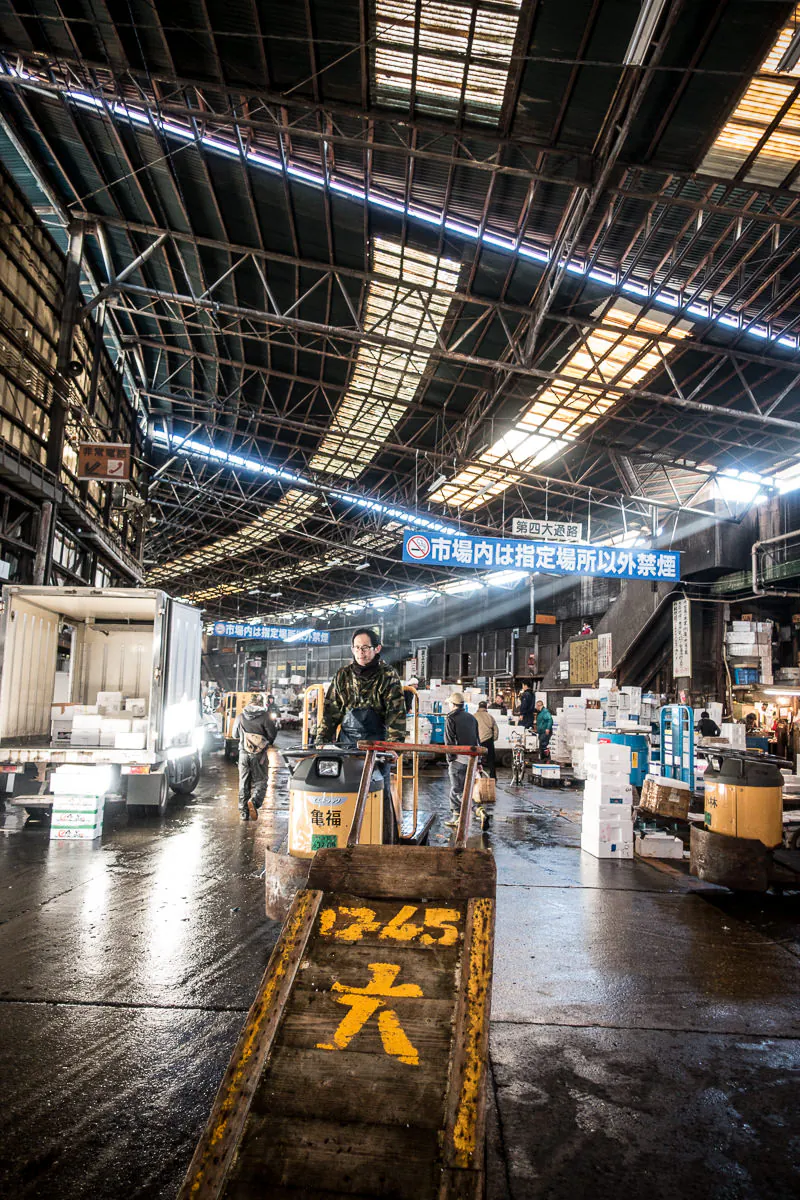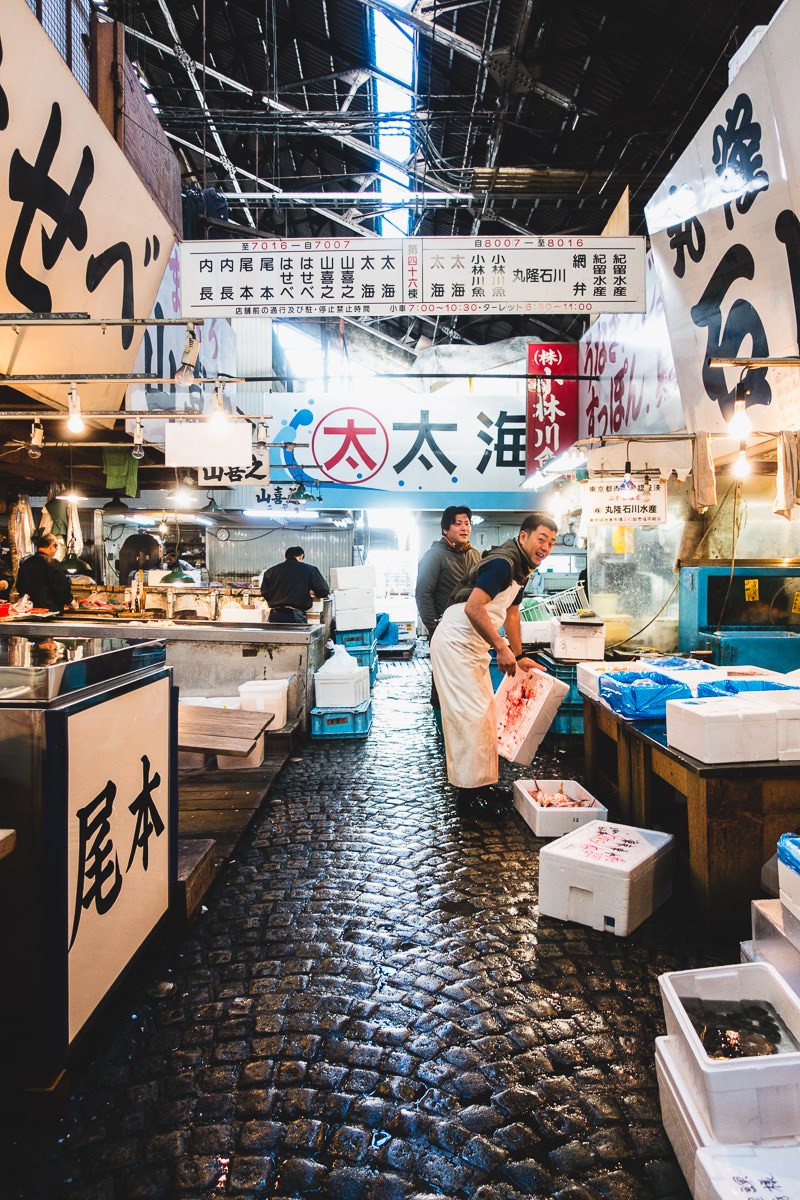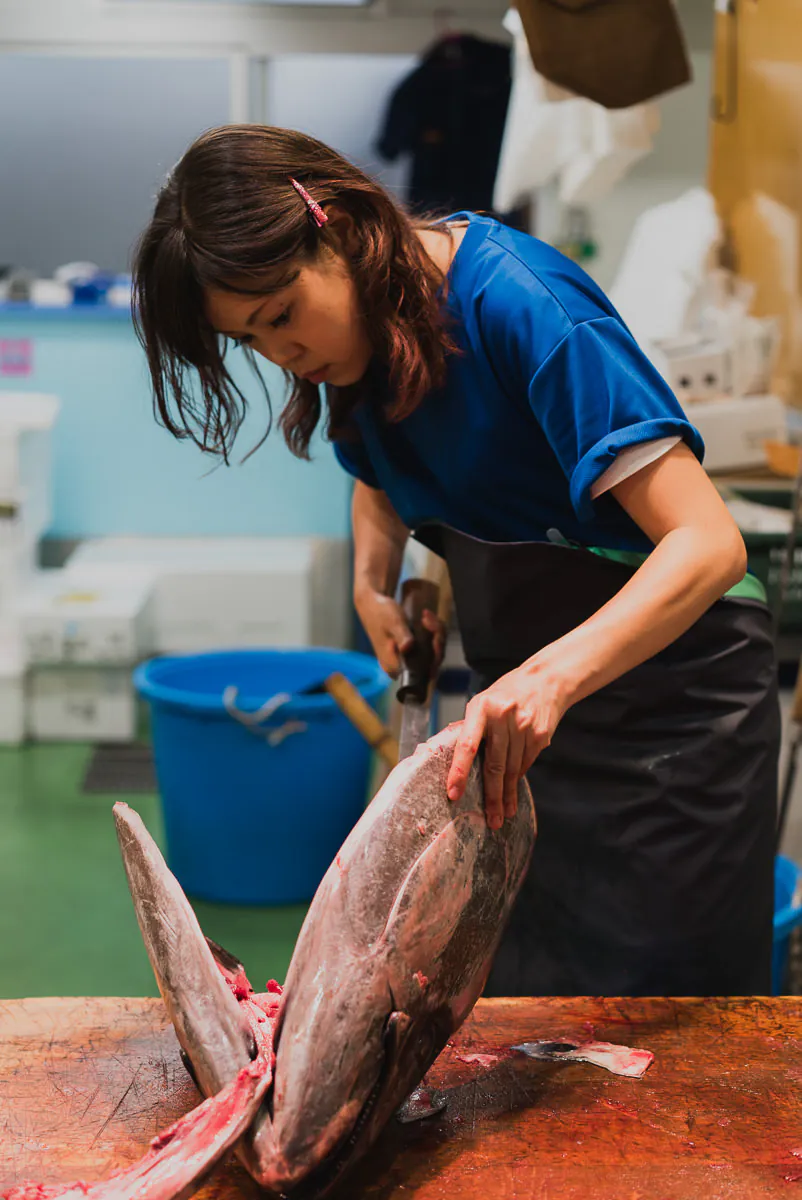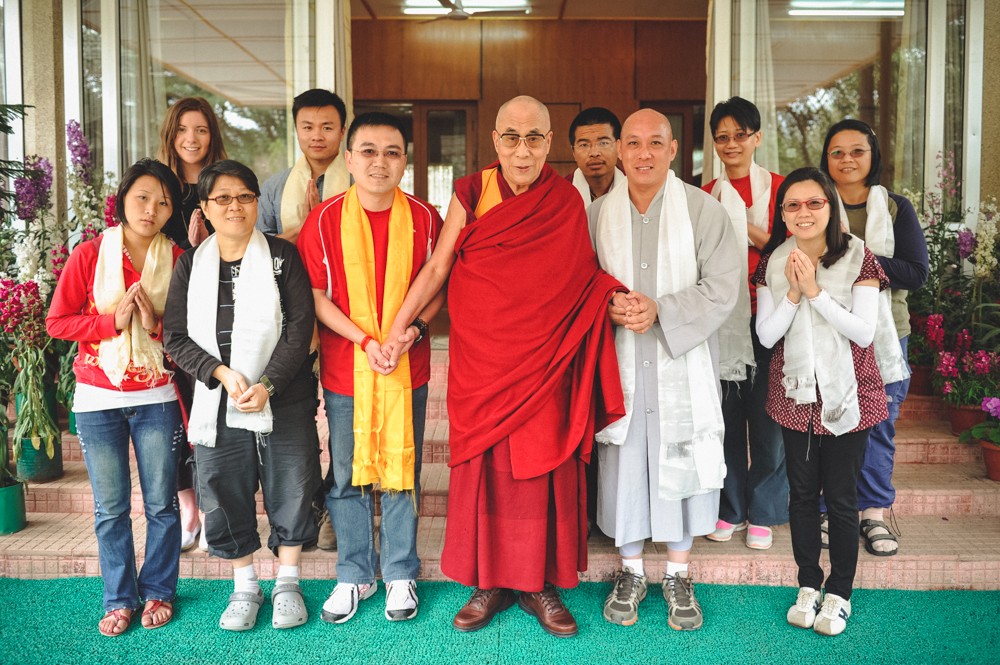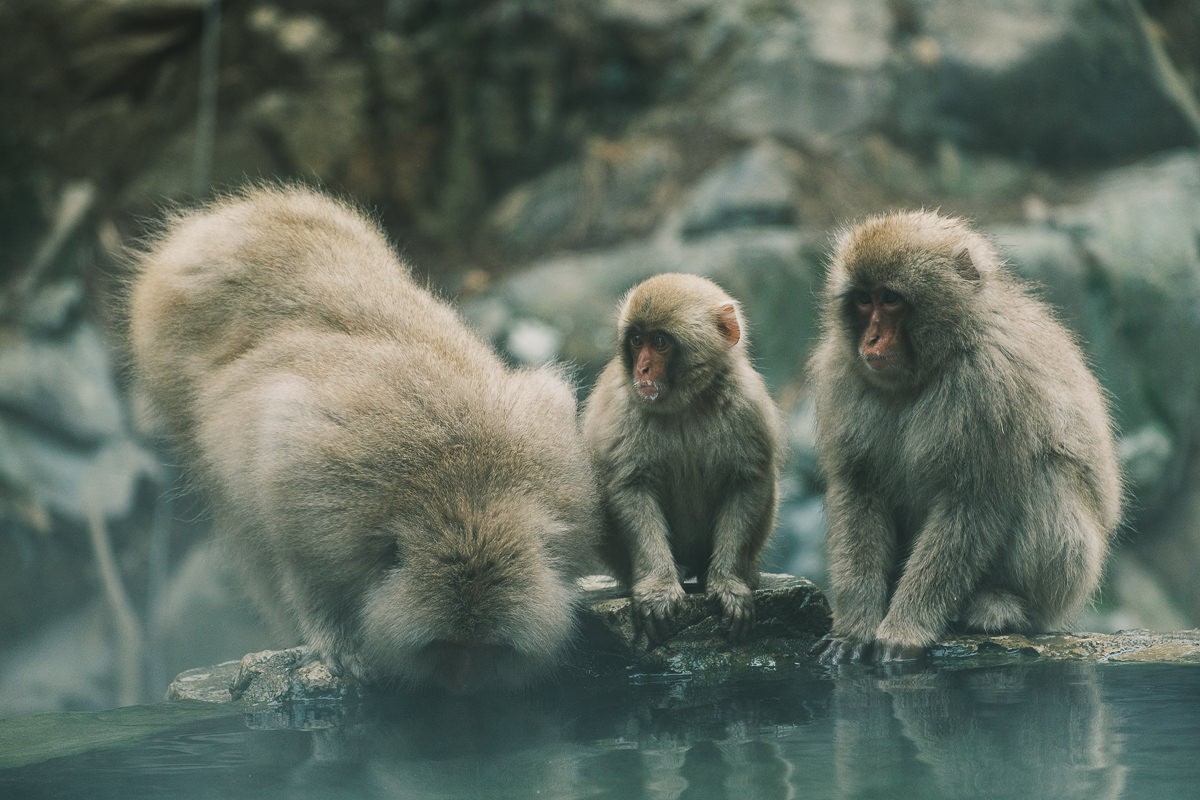Toyosu Fish Market: The Traveler’s Guide To The Tuna Auction 2024
Toyosu Fish Market: The Traveler’s Guide To The Tuna Auction 2024
In October of 2018, as part of overhauling an aged infrastructure and addressing the needs for modernization and future development, Tokyo’s Tsukiji Market was moved to its new home at the Toyosu Market complex. While some lament the move from such an iconic and historic place, the city did so to usher in a new era of growth and ensure the survival of a foundational industry.
A couple of months earlier, I visited the inner Tsukiji Market for the last time, just before the move. It had already closed for the day and the emptied setting brought about a deeper nostalgia for this place than I expected. As I walked through the deserted corridors, I was flooded with vibrant memories of my first visit.
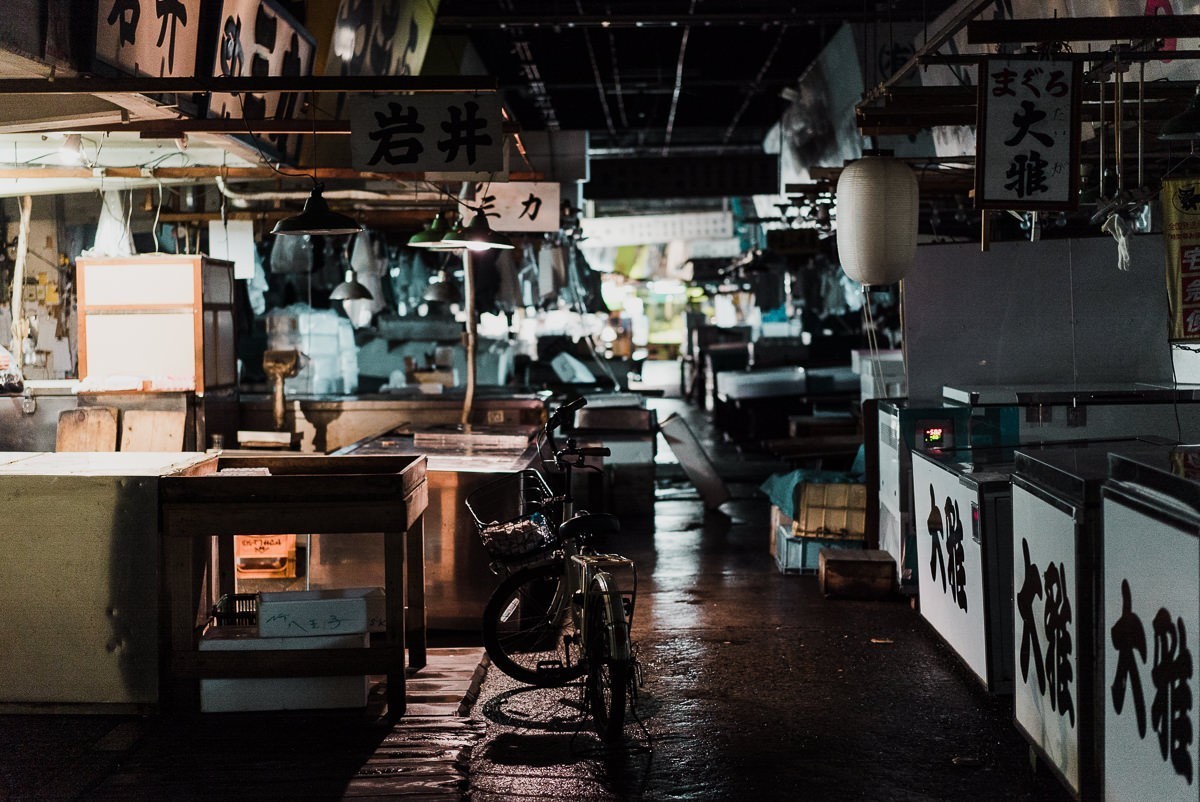
Of wandering past stalls of fresh fish and exotic seafood, dodging hand-drawn wooden dolleys shuffling stacks of white styrofoam containers across a ring-shaped corridor, and standing beneath the brilliant streams of light flooding through skylights and reflecting off damp floors. I remember waiting at 3 am with sleep-deprived tourists, all of us tired but eager to watch the legendary morning tuna auction. And I can still almost taste the fresh slices of sushi at breakfast in the outer markets. These are still some of my favorite memories of Tokyo.
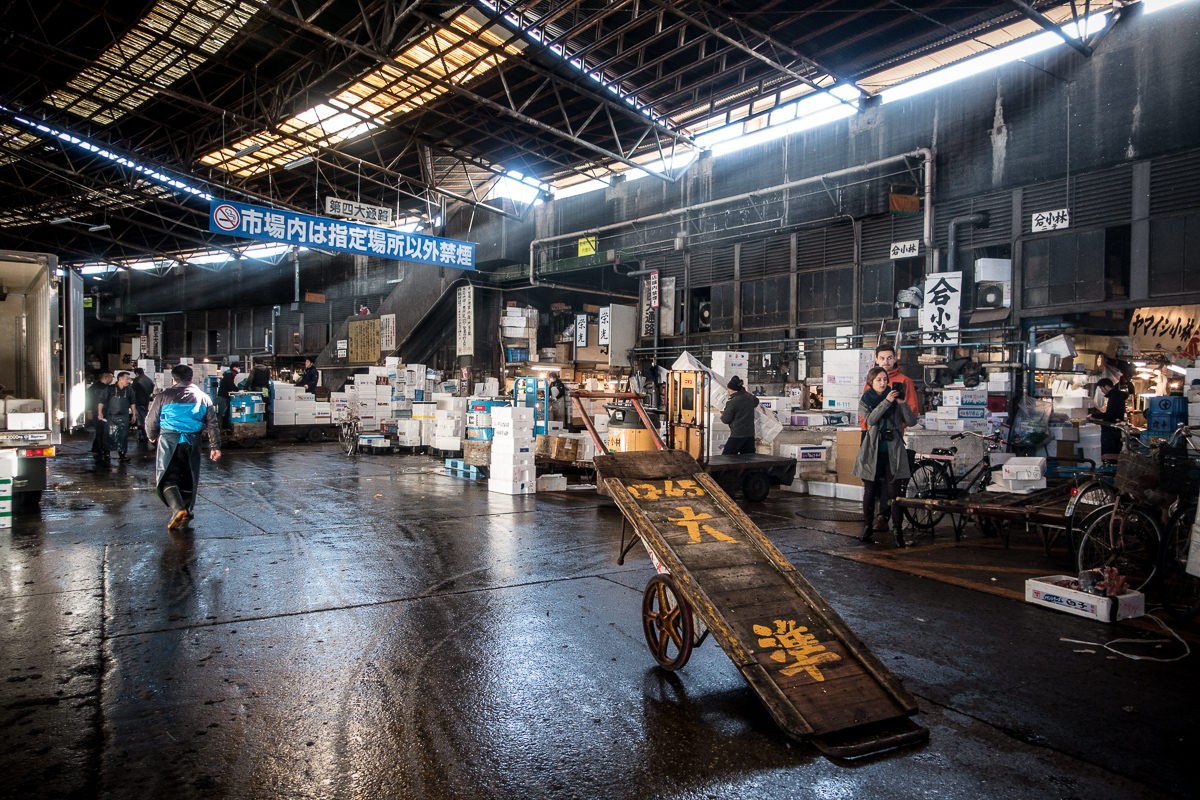
The old Tsukiji Market is gone, its past legacy carried on by the remaining shops and restaurants in the outer markets and its future reborn at the new Toyosu Fish Market complex. The tuna auctions still happen everyday. Read out for my tips to make the most of your experience at its new home.
Lesser-Known Facts About The Toyosu Fish Markets
Built on a man-made island. The Toyosu Fish Market is built on a man-made island in the Bay of Tokyo using reclaimed land. It was part of an initiative to expand Tokyo’s footprint and accommodate a growing population. Originally an industrial zone, it’s now a thriving urban area with a strong pipeline of new projects and developments
State of the Art refrigeration. One of the main needs for moving the fish market was to upgrade to the latest state of the art refrigeration technology. The new system provides more consistent and optimal temperature controls.
Remote Bidding System. Buyers no longer have to physically be present at the morning auctions and can participate remotely via a digital bidding system.
Seismic Isolation Technology. Japan is susceptible to earthquakes, so newer developments have incorporated advanced early detection system for seismic activities. The infrastructure has been designed to withstand major earthquakes for greater safety.
Largest fish market in the world. The Tsukiji Market was the largest in the world. The Toyosu Markets is double the size, so it easily retains that distinction.
Most expensive ever sold at auction. At 333.6 million yen ($3.1 million USD at the time), the 612-pound bluefin tuna sold to the “Tuna King” Kiyoshi Kimora in 2019 holds the record for the most expensive tuna ever auctioned.
Nowadays, the first auction of the year is seen as both a publicity stunt and a ceremonial tradition honoring the industry. The top bluefin tuna often sell for around $250,000 USD. Prices for the rest of year drop back down to an earthly figure of around $30,000 USD for a large catch.
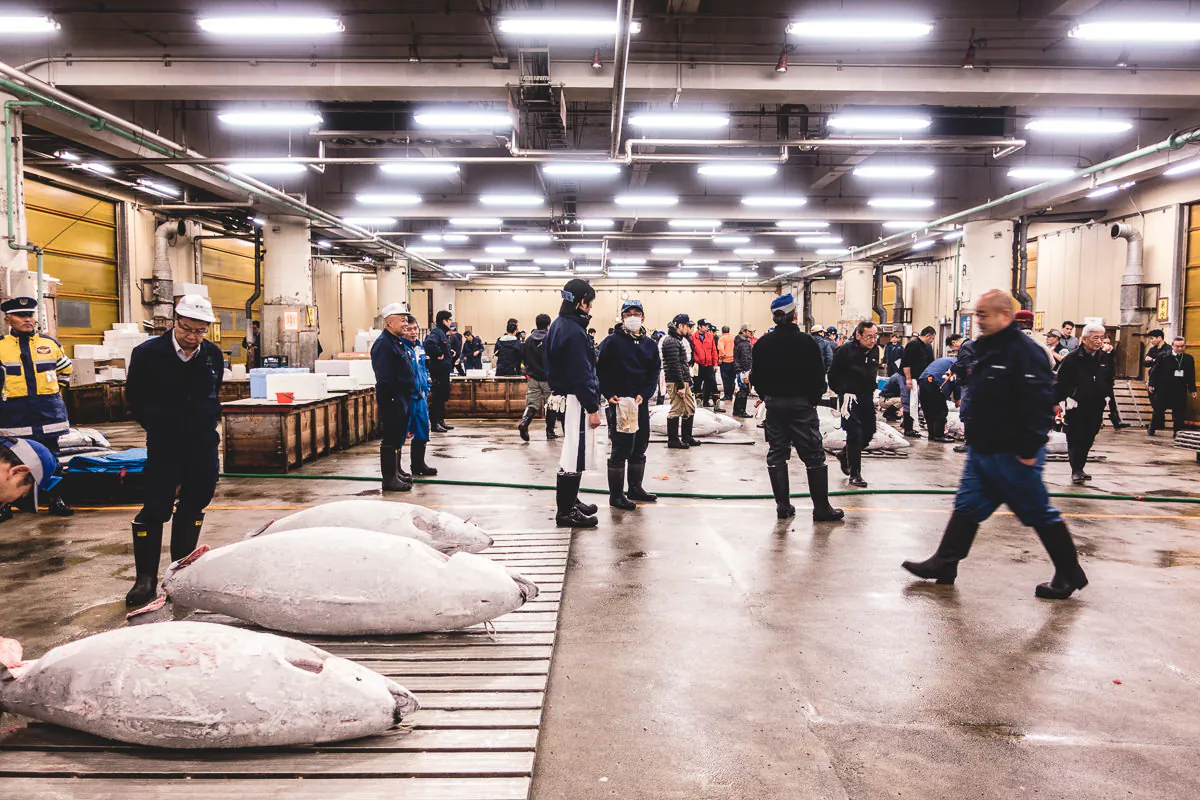
Catching the Tuna Auction: An Insider Take
I’ll start off with this advice: manage your expectations.
If you’ve seen photos or videos of the Tsukiji Tuna Auction, this won’t be the same thing. For one, the Toyosu Fish Market is newer and cleaner, but it also feels a lot more sterile in person compared to the old auction area at the Tsukiji Fish Market.
Like the its predecessor, the auction is not something put on for tourists. These are real auctions where a select group of licensed buyers secure tuna for the restaurants and exporters they represent in Japan and around the world. No longer can spectators stand in the auction area like the old days. You can still view the auction in designated spaces nearby, thus allowing the auction to go on free of disturbances.
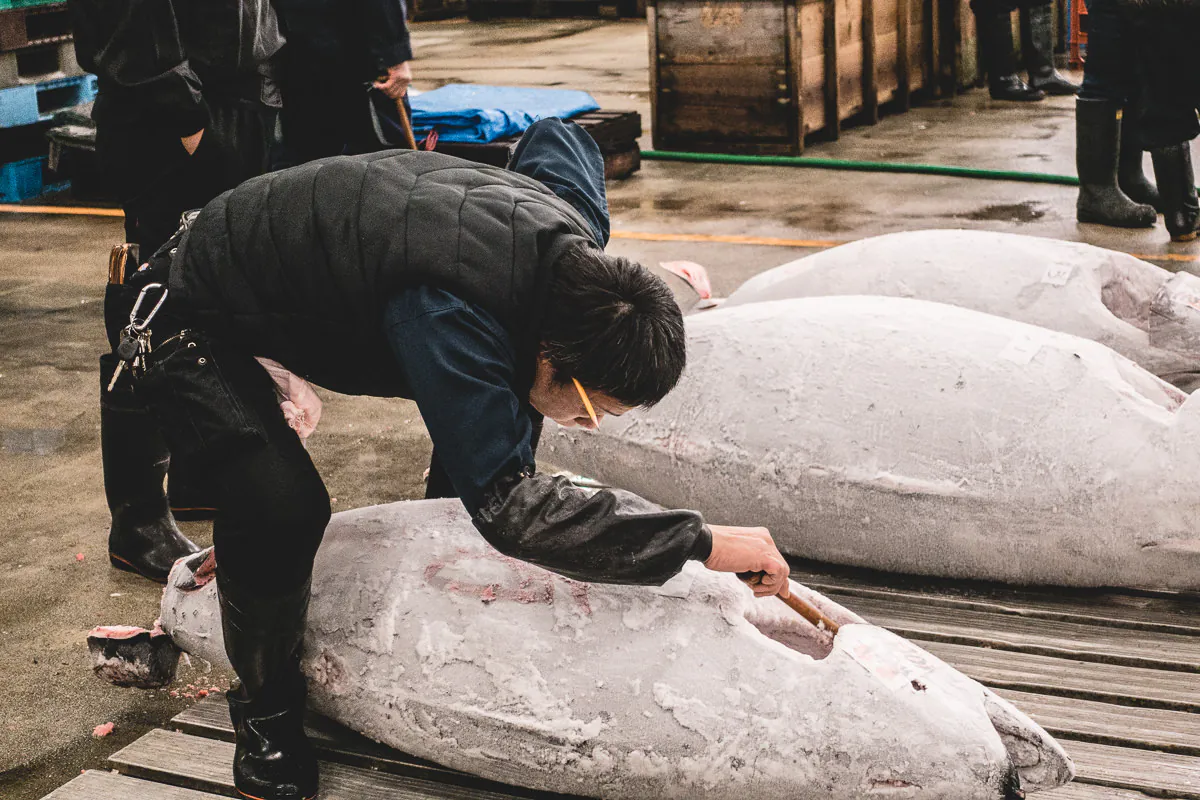
Still, it is an electrifying experience where ginormous tunas are sold with rapid-fire bidding at staggering prices. There’s no spectacle quite like it anywhere else.
What Time Does The Fish Auction Start?
Like before, the tuna auction at Toyosu happens very early in the morning, between 5:30 am and 6:30 am. They can last anywhere between 20 minutes to 1 hour on a given day. You should plan to arrive around 5 am to get a spot in the gallery or 5:30 am at the observation deck if you have a ticket (see below).
There are no trains that will arrive early enough for you to catch the tuna auction. It’s recommended to stay in a nearby hotel (see my recommendations below) or to take a taxi.
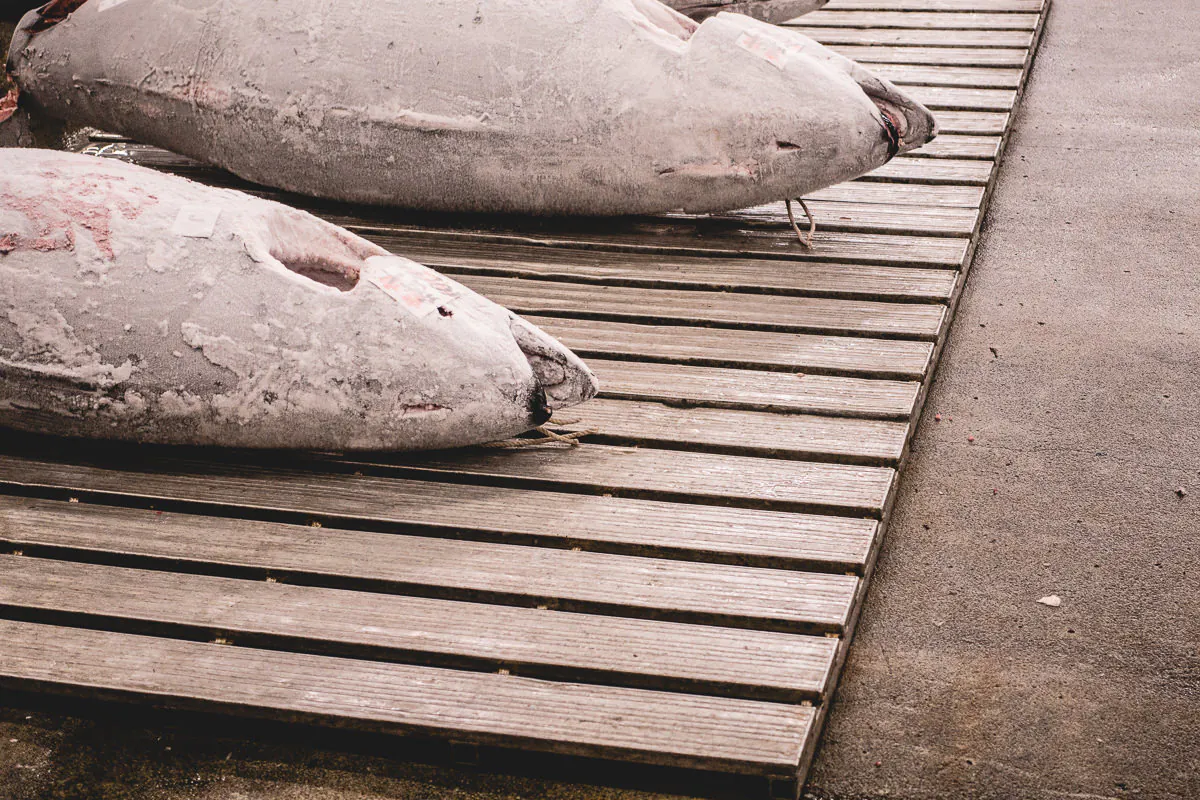
Pro Hack: Taxis in Tokyo can be expensive, especially at night. Spend the night before relaxing at the nearby 24 hour Manyo Club Onsen. It’s a new hot spring spa complex in Toyosu that’s well worth a visit on its own. You can effectively save on a night’s accommodation by paying for the entrance + the overnight fee and combining it with a visit to the Toyosu market in the morning.
Where Is The Best Place To See The Fish Auction?
There are two areas where visitors can view the auction: the auction walkway gallery one floor above the auction area and the special observation deck on the same floor.
The auction walkway gallery is opened from 5 am to visitors and you do not need a ticket to see the tuna auction from here. The actual auction area can be viewed behind fully sealed glass windows with audio played through a speaker. I recommend this option only if you did not secure a ticket for the special observation deck through the lottery raffle.
TIP #1: If you are planning to see the auction at the auction gallery, arrive early to secure a spot by the window. Otherwise, you might just be looking at the back of a bunch of heads.
TIP #2: For the best photos, use this a collapsible anti-reflection hood to shoot through the window. This is especially useful for Tokyo, where some of the best viewpoints are behind a glass partition. There’s a collapsible hood for professional cameras too.
The special observation deck, located on the same floor as the auction. The tickets are free, but you need to apply through a monthly lottery (more details below). You are much closer to the action here. And though there is a glass barrier, it does not go all the way to the top, so you hear the auction.
TIP #3: Layer up and stay warm. The accessible areas of the fish market is kept at a very cool temperature throughout, but the special observation deck being exposed to the auction area, is almost like a freezer.
Random Fact: the floor of the tuna auction area is green. The color is used to help buyers examine the red color of the tuna flesh.
How The Toyosu Tuna Auction Lottery Works
To get a free ticket for the special observation deck requires planning. The market offers 100 tickets each day for this area. You need to apply online through the official Toyosu Market website, at least one month before your visit. The application period is usually open for 7 days during the first week of the month for the following month’s tickets.
For example, if you are planning to visit in June, you will need to apply during the first week of May. The exact application dates for each month will change, so check the website for the most accurate information.
You will need to choose up to 3 dates you want to visit for up to 3 people. The lottery winners are chosen at random, and not on a first-come, first served basis. Winners are announced the following week after the close of the application period.
If you’ve secured a ticket, you will need to arrive to the Promotional Corner on the 3rd floor of the Fisheries Wholesale Market Building (Block 7) by 5:30 am on the morning of the tour. The tour starts at 5:45 am.
Toyosu vs Tsukiji Fish Market
When the inner Tsukiji Market closed in 2018, an era came to an end. Besides being a newer facility, the main different between Toyosu and Tsukiji is really the separation of industry people and visitors.
At the old inner Tsukiji Market, you can enter the wholesale area after 9 am and mingle with the workers in most parts of the market. It was a bit of chaos, but it just worked.
The Toyosu Markets are a bit more organized in the sense that there are signs and warnings clearly keeping visitors from accessing the working area. It makes sense, but if you’re looking to be in middle of the action, you’re out of luck. There are designated areas where you can purchase seafood, but you’ll need to be a licensed buyer to access the wholesale market.
Pro Hack: If you want to visit the off-limits areas of the Toyosu Markets, you’ll need insider connections with people in the industry. The concierge desks at high-end hotels can be helpful at securing hard to get restaurant reservations. They might possibly be able to assist with their own network. This is not guaranteed, so don’t have any expectations.
Restaurant Recommendations at Toyosu Market
Like Tsukiji, your visit Toyosu is incomplete without sitting down for a meal, preferably a breakfast of fresh sushi. You can opt for one of the restaurants or pick up some seafood bowls and enjoy it on the rooftop. The biggest selection of restaurants are in the Fisheries Intermediate Wholesale Market Building on the 3rd floor, but there’s still a large selection of around 13 restaurants on the 3rd floor of the Management Facilities Building.
The Fruit and Vegetables Building also has a few restaurants. You can also find food in the many stalls scattered around.
Sushi Dai and Daiwa Sushi
Many of the famed sushi restaurants from the Outer Tsukiji Market opened up a branch at Toyosu during the move. Flagbearers like Sushi Dai and Daiwa Sushi continue to serve top-notch sushi prepared from the freshest catch. Expect long lines, but also some of the best sushi you’ll ever taste. Go for their omakase offerings and let the chef decide what’s best that morning.
Sushi-Bun
Another popular sushi shop. No nonsense and just as fresh and pricey as Dai and Daiwa, but with a shorter line.
Nakaya
If you’re looking for that pretty seafood bowl photo op, line up for the kaisendon here, where it’s reasonably priced.
Senriken
This no frills coffee shop had been a staple for market workers at Tsukiji and it’s still the go to spot for breakfast at Toyosu. Try their soft boiled eggs in the cream stew served with buttered toasts.
Yamacho
This gem is know for their grilled unagi (eel) bowls, if you looking for something that’s not so raw in the morning.
Odayasu
This shop serves light and crisp tempura over perfectly cooked rice. A warming and hearty dish after you’ve finished with the early morning auction.
Sushizaimai
This is a chain you’ll find all over Tokyo, but always a reliable spot if you’re looking for fresh sushi on a budget.
Toritoh
I love a good runny oyakodon and crispy fried chicken and this spot is the best value in the Toyosu market. It’s definitely a place for chicken lovers.
Exploring Around Toyosu Market
After the auction, the area around Toyosu offers plenty of activities to continue on with your day. Here are a couple of recommendations:
Shop For Your Kitchen At Uogashi Yokocho
Located in the market, Uogashi Yokocho sells everything from kitchen knives and cooking utensils to fresh wasabi. It’s a great place to pick up unique souvenirs and essentials to stock your kitchen at home. There are a lot of unique snacks and ready to eat treats on offer.
TeamLab Planets
A short walk from Toyosu Market is TeamLab Planets exhibition. Following in the footsteps of the still popular TeamLab Borderless, Planets is an immersive sensory experience disguised as an art museum. Take off your shoes and wade barefoot through a large-scale water and light art installation and then continue onto the other equally trippy experiences.
PRO TIP: Get your tickets as soon as you can for Planets. They often sell out weeks in advance. You can buy your tickets here or here.
Manyo Club Onsen Toyosu
This multi-floor spa complex is 2024 addition to the Toyosu Area. It’s open 24 hours a day and hot spring water is trucked in daily from the Hakone and Yugawara Hot Springs. Bathe, dine, and get the full onsen experience right in the urban sprawl of Tokyo. You can get discounted tickets here that includes a free drink.
Where To Stay Near The Toyosu Fish Market
Since the tuna auctions start so early in the morning, staying in a nearby hotel is recommended. Though Koto-Ward is a bit further away from the major tourist spots in Tokyo, it’s actually a great base for visiting many popular attractions:
Toyosu Fish Market, Aqua City Odaiba, TeamLab Planets, Disneyland/DisneySea, Unicorn GUNDAM, are just a few. I’ve included some highly recommended hotels collected from fellow travelers sharing post-trip reports. All 3 hotels below are within minutes of a train station.
Mitsui Garden Hotel Toyosu Premier: 2 minutes walk from the Toyosu Station and centrally located to the many restaurants and shopping malls in the area. This modern hotel is a perfect base for the greater area. It’s about a 30 minute walk to the Toyosu Fish Market.
Hotel JAL City Tokyo Toyosu: 4 minutes walk from the Shin-Toyosu Station and just steps from the Toyosu Fish Market, the hotel offers incredible views of the surrounding waters. Rooms are smaller than the Mitsui, but they are clean and have everything you need for a comfortable stay. Prices are heavily discounted on Booking.com.
La Vista Tokyo Bay: 9 minutes walk from the Shin-Toyosu Station and located just outside the Toyosu Fish Market, makes this waterfront hotel a great place to stay the night before visiting the fish auction. This highly rated hotel is also heavily discounted on Booking.com.
Bonus Option: Manyo Club Onsen Toyosu. I’ve mentioned this as a savings hack. It’s not a hotel, but if you just need to spend the night nearby, you can combine a visit to this onsen spa complex and pay the overnight charge. There’s a comfortable resting area when you’re done bathing. Spending the night in an onsen spa should be on everyone’s bucket list, so you can knock off two birds with one stone.
Final Thoughts And Tips
TIP #1: Plan ahead. Toyosu Fish Market is massive and can be overwhelming. Snap a photo of the market’s layout when you arrive for reference.
TIP #2: Be respectful. The market is a professional working environment. Follow all guidelines, especially in auction areas, and observe quietly. Take photos, but don’t use a flash.
TIP #3: Consider a guided tour. If you’re completely new to Japan, I’d recommend hiring a private guide or joining a tour to learn about what you’re seeing. A guide can help you make seafood purchasing decisions too.
I might be one of those people who wishes, selfishly, that the old Tsukiji Market never changed. There was something magical about the storied place. Or maybe it really is just nostalgia. Nothing gold can stay. We are always moving towards the future, and Japan is no exception. I believe in time the Toyosu Market will develop a similar charm to the old Tsukiji Market. For now, let’s just enjoy it for what it is, especially a bucket list experience like the tuna auction.
If you’re looking for more travel inspirations, scroll through some of the 450+ experiences on my bucket list. Maybe you’ll find your next adventure on there.
How You Can Help
When you make a purchase using these links, you’ll help support this site at no cost to you.
| Booking.com | Agoda.com |
| Amazon.com | Klook.com |
| Viator.com | GetYourGuide.com |
Updated on May 29, 2024






